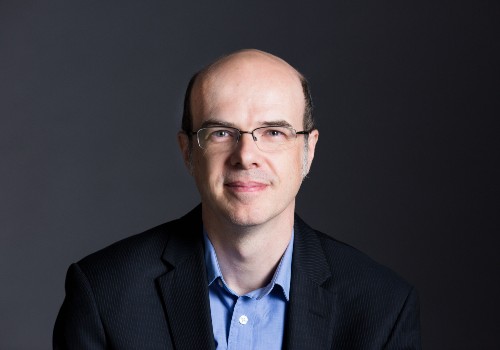
The CIO of Phoenix Children’s Hospital is an active participant in the hospital’s efforts to improve care for both patients and their families.
Innovation for pediatric care is critical—and complex. Some of the best new ideas for clinical care are coming out of the nation’s 46 free-standing children’s hospitals, where providers are tasked with treating some of the smallest and most fragile patients and supporting their families.
“There are a lot of audiences to satisfy,” says David Higginson, executive vice president and chief innovation officer at Phoenix Children’s Hospital. “The enthusiasm and the acceptance of change,” he says, are energizing, as is “the impact you see on family members’ faces.”
A veteran of some 25 years in children’s healthcare, Higginson joined Phoenix Children’s in 2011 as its chief information officer, after stints as the chief information technology officer for Arkansas Children’s Hospital and CEO of Bluefish Systems, an innovative healthcare software company that he had launched. As CIO (information), he helped Phoenix Children’s integrate its electronic medical record platform with billing and ancillary clinical systems and was named “CHIME Innovator of the Year” in 2016 and AZ Top Tech’s “CIO of the Year” in 2017.
All that technology stuff is fun, but innovation really gets the brain working. Higginson became chief operating officer in 2018, then CIO (innovation) in 2020. Under his leadership, Phoenix Children’s has become one of the nation’s top children’s hospitals.
Higginson’s leadership strategy involves being in the trenches rather than the office behind a desk. He wants to be a part of the process.

David Higginson, executive vice president and chief innovation officer of Phoenix Children’s Hospital. Photo courtesy Phoenix Children’s Hospital.
“It’s not sitting in a box by myself dreaming up what’s going to happen in 10 years, but being in the hospital,” he says. “You need to be there and to take part.”
That’s why Higginson says he spends a lot of time in waiting rooms, the cafeteria, and out by the hospital’s entrance, unannounced and unobtrusive, watching how patients, visitors, and caregivers interact. He’s looking for clues on how to make those interactions better, and ideas that can help shape how care is delivered.
“We are driven by outcomes and need, but we are also fundamentally trying to treat all the patients we have with limited resources,” he says, hinting at the challenges facing healthcare after a pandemic and in the midst of economic turmoil. “We’re not going to go out there and buy the biggest product, and we are also not afraid to build things ourselves.”
A unique challenge to children’s hospitals is the audience. Patient-facing technologies like patient portals “are incredibly complicated for children,” Higginson points out, and their value has to be figured not only for kids but for the parents and caregivers who use them to access resources and coordinate care.
As an example, in 2014 Phoenix Children’s decided to put an iPad in every room. The reasoning for this project was that children in a hospital are isolated from their friends, and need a platform to connect, play games, and access other entertainment. Higginson says the hospital had to build out a process where those iPads had the apps that children would want and use, while also creating channels that their parents would appreciate.
“It was reality a quality of life issue,” he says, “but there was a lot more that we had to take into account and build for.”
That’s how he’s approaching an ongoing project to equip every hospital room with Amazon’s Alexa virtual assistant technology, synchronized with a video platform like Zoom. Higginson says the platform needs to be configured for multiple parties so that providers can link in family members and specialists for meetings with the patient and his/her family, as well as interpreters. But it can also be used by care teams to check in on and communicate with patients when needed, and it can be used by patients and family members to access resources.
Higginson is also bullish on the use of AI in clinical care, particularly in helping clinicians identify health concerns. A project that sifted through some 20 years of data to spot early indicators of malnutrition, he says, has helped identify, on average, eight patients a week whose symptoms were so slight that they would have been missed.
“There’s a lot of potential there,” he says.
What he’s not a big believer in is wearables and remote patient monitoring. They’re not a good fit for children, he says, who aren’t likely to wear something every day or hold to a certain schedule. Those platforms aren’t sustainable for pediatric care, he says, often because of connectivity issues.
In fact, Higginson sees a future in healthcare innovation that focuses less and less on the technology and more and more on the connections.
The technology will get more sophisticated, he says, so that it stays in the background while giving care teams, patients, and families more and better opportunities to interact. Through these platforms, care teams will not only be able to improve clinical care, they will also be able to fine-tune their own workloads and offer more help to families who quietly deal with a lot of responsibilities and stress.
That’s what makes children’s hospitals so unique.
“We don’t treat little adults—we treat children,” Higginson says. “They have different sets of needs.” And they have families, also with different sets of needs. It’s a complex environment that needs the right type of clinician—and chief innovation officer—to work well.
Eric Wicklund is the Innovation and Technology Editor for HealthLeaders.